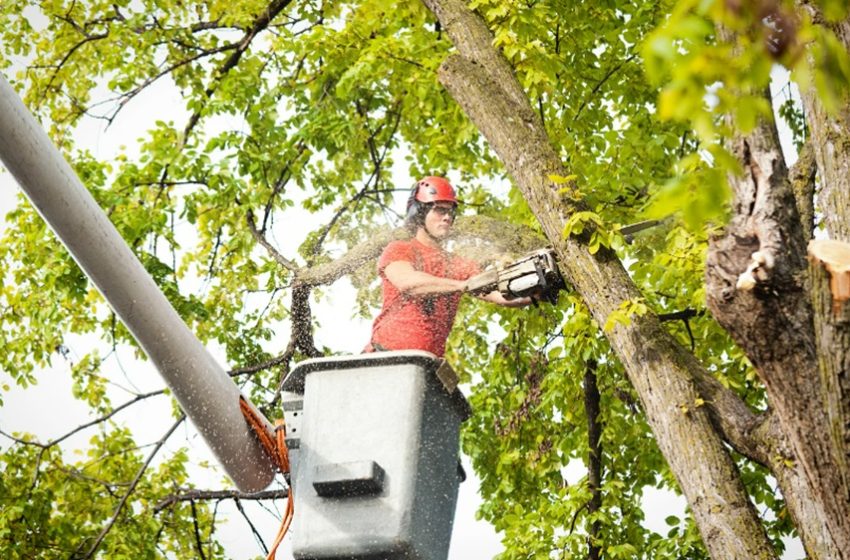Top Signs It’s Time to Call a Tree Service Professional

Maintaining the health and safety of your trees is crucial for the overall well-being of your landscape. Sometimes, it becomes necessary to call a professional for tree service in Cumming to ensure that your trees are properly cared for.
Visible Signs of Disease
One of the most obvious indicators that your trees need attention is the presence of visible signs of disease. Common symptoms include discolored leaves, visible fungus growth, or brittle branches. These signs suggest that the tree is struggling and may require professional intervention. Early diagnosis can prevent the disease from spreading and causing further damage.
Structural Instability
Another red flag is structural instability. Trees that lean significantly or have large, dead branches pose a risk to both property and people. If you notice that a tree appears unstable, it’s essential to consult a professional who can assess the risk and decide on the appropriate action.
Interference with Power Lines
When trees grow too close to power lines, they can become a severe hazard. Not only do they pose the risk of power outages, but they also increase the danger of electrical fires. Professional tree services have the tools and expertise to trim or remove such trees safely, minimizing any potential risks.
Preventative Care and Maintenance
Regular tree care is just as important as addressing immediate issues. Routine maintenance, including pruning, fertilizing, and watering, can prevent many problems before they start. By investing in ongoing care, you can enhance the longevity and health of your trees, ensuring a lush and beautiful landscape year-round.
Optimal Season for Tree Removal
Understanding the optimal season for tree removal is essential for planning any significant tree work. Typically, the best time to remove trees is during their dormant period in late winter, but this can vary depending on the tree species and local climate conditions. Consulting with professionals on the optimal season for tree removal can provide essential insights tailored to your specific needs.
Conclusion
In conclusion, keeping an eye on the health, stability, and placement of your trees can save you from severe issues down the line. Visible signs of disease, structural instability, and potential interference with power lines are all key indicators that it might be time to enlist the help of a tree service professional. Regular maintenance and understanding the best time for tree removal can help you maintain a safe and beautiful landscape. Don’t hesitate to contact professionals for tree care, as their expertise ensures that the job is done safely and effectively.
Frequently Asked Questions
How often should trees be pruned?
The frequency of tree pruning depends on the type of tree and its growth rate. Generally, most trees benefit from pruning every 3 to 5 years. Younger trees may require more frequent pruning to ensure proper growth and shape. Consulting a professional can provide a tailored timeline based on your specific tree species and landscape needs.
What are the benefits of professional tree services?
Professional tree services offer a range of benefits, including the expertise to properly diagnose and treat tree diseases, the tools and skills to safely remove hazardous branches or trees, and the knowledge to perform routine maintenance effectively. This ensures the health and safety of your trees and property, ultimately saving you time and potential costs from damage.
Can I remove a tree myself?
While it may be tempting to tackle tree removal on your own, it is generally not recommended due to the risks involved. Removing a tree safely requires specialized equipment and techniques that professionals are trained to use. DIY tree removal can lead to injury, property damage, and incomplete removal that may affect future growth or landscape appearance.
What are the signs of a healthy tree?
A healthy tree typically has full, green leaves during the growing season, strong, sturdy branches without cracks or decay, and an absence of visible fungi or pests. The bark should be smooth and free of deep fissures or peeling. Regular professional inspections can help maintain tree health by identifying potential issues early on.
How can I prevent tree disease?
Preventing tree disease involves a combination of proper planting, watering, and regular maintenance. Ensure trees are planted in suitable locations with adequate space, sunlight, and soil quality. Water trees appropriately based on their species and climate, avoiding both overwatering and underwatering. Regular pruning and inspection by professionals can help catch diseases early and apply necessary treatments.